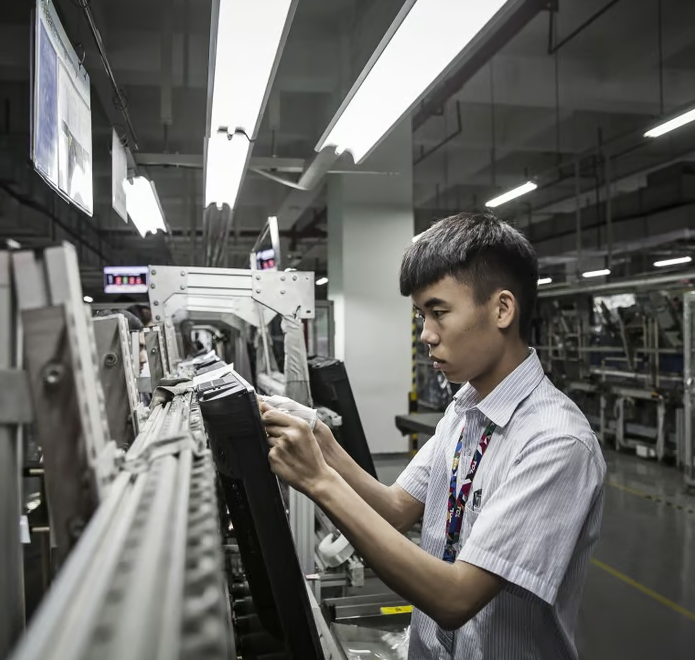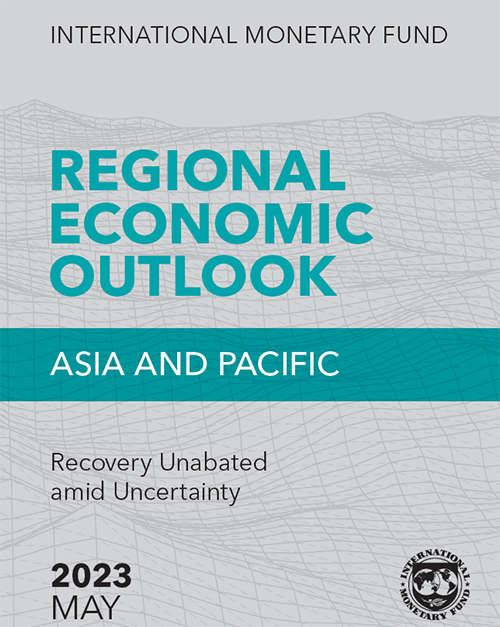
Asia and Pacific most dynamic of the world’s major regions in 2023
Asia-Pacific 70% of Global Growth 2023
Fair financial weather like Miracle-Grow for robot sales in Asia-Pacific
“Asia-Pacific will be the most dynamic of the world’s major regions in 2023, predominantly driven by the buoyant outlook for China and India,” the report said. Asia’s economy was expected to expand 4.6% this year after a 3.8% increase in 2022, contributing around 70% of global growth.”
—International Monetary Fund, 2 May 2023
When the rest of the world is not doing so well and you are growing at 4.6%, you should feel good,” said Krishna Srinivasan, director of the Asia and Pacific Department of the International Monetary Fund (IMF)

Outlook: Dynamic Growth and Continuing Inflation Pressures Asia and Pacific will be the most dynamic of the world’s major regions in 2023, predominantly driven by the buoyant outlook for China and India.
The two largest emerging market economies of the region are expected to contribute around half of global growth this year, with the rest of Asia and Pacific contributing an additional fifth. The reopening of the Chinese economy will be pivotal for the region.
It is expected to result in a pickup in private consumption that will drive China’s growth rebound. Spillovers to the rest of Asia from higher consumption in China are estimated to be larger than spillovers from other growth drivers, such as investment. The near-term impact will likely vary across countries, with those more heavily reliant on tourism likely reaping the most benefit, given that the expected rise in China’s imports will be strongest for services.
As in the rest of the world, domestic demand is expected to remain the largest growth driver across Asia in 2023.
The rebound in private consumption supported by the drawdown of excess savings built up during the pandemic—reflecting a combination of lockdown-related spending cuts, desire for higher precautionary savings, and exceptional government transfers—is expected to continue this year as household savings ratios have not yet normalized. The pace of the rebound should moderate in the economies in which the drawdown is most advanced. Moreover, improved prospects and still accommodative financial conditions in many Asian economies are likely to support credit flows for household consumption and corporate investment.

According to Research & Markets’ analysis, the labor cost in Southeast Asia is currently low, but the growth rate of the wage level is high. Therefore, many foreign-invested companies in Southeast Asia, such as those in the auto parts, logistics, and electronics manufacturing industries, are purchasing industrial robots to improve industrial automation and control the growth of labor costs.
Southeast Asia, with a total population of over 600 million by the end of 2021, has an overall economic growth rate higher than the global average and is one of the key drivers of future global economic growth.
At present, the development of industrial robot industry in Southeast Asian countries varies widely. According to the publisher’s analysis, the industrial robot industry in Vietnam and Thailand is developing rapidly.
Some Chinese companies have already established industrial robot production bases in Vietnam and are expanding their production capacity. For example, Guangdong Topstar Technology Co., Ltd. has taken Vietnam as an important production base and one of the main target markets for industrial robots.
Overall, according to the publisher’s forecast, the size of Southeast Asia’s industrial robot industry will maintain growth from 2023-2032.
On the one hand, the lower operating costs in Southeast Asian countries attract global industrial robot companies to shift their production capacity to Southeast Asia.
On the other hand, with the development of Southeast Asia’s auto parts, electronics manufacturing and logistics industries, the demand for industrial robots in Southeast Asia is also growing.
Global Sales of industrial robotics surging to 18.9% CAGR, reaching $220B by 2033
The worldwide market for industrial robotics is expected to reach a value of US$ 220 billion by 2033, showing an increase from its previous value of US$ 39 billion in 2023.
The market is anticipated to grow at an astonishing Compound Annual Growth Rate (CAGR) of 18.9% from 2023 to 2033. Heightened focus on improving the productivity of high-volume production lines, specifically in the manufacturing of semiconductors and electronic equipment is expected to drive the growth of the industrial robotics market.
Estimates showing the East Asia region will prove to be the most remunerative pocket for the industrial robotics market while the automotive and electric industries will collectively hold the dominant market share during the forecast period.
The market is shaped by the growing adoption of robotics and smart manufacturing in the industrial sector. The prevailing trend of Industry 4.0 aids the market in this regard.
Owing to this, manufacturers are expanding their factories to meet the increasing demand for industrial robotics. In addition to this, the increasing popularity of electric automobiles among consumers is a promising trend due to the cost-benefit it offers. This trend is expected to have a positive impact on the industrial robotics market, as car manufacturers are increasingly utilizing automated robotic systems for high-volume vehicle production

